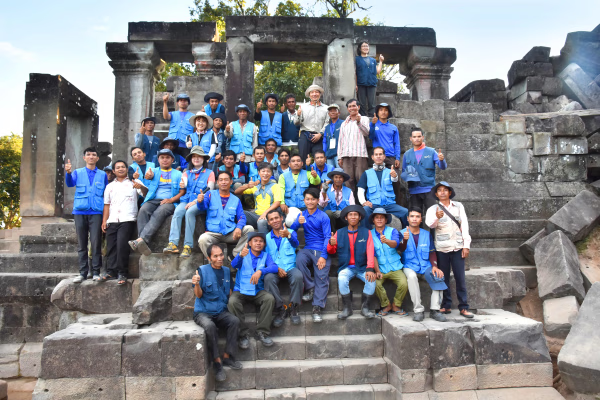
Lao-Korea Cooperation Project : Hong Nang Sida Temple
World Heritage, International Cooperation Project in Vat Phou
Published 2024.08.16 by 유다연
ອະທິບາຍ
Since 2013, the Cultural Heritage Administration and the Korea Cultural Heritage Foundation have been working on a heritage restoration project at the World Heritage Site “Vat Phou and Associated Ancient Settlements within the Champasak Cultural Landscape” in Lao PDR. The project focuses on restoring the collapsed stone structure called Hong Nang Sida, located in the southern part of the Vat Phou Temple Complex. This site, also known as the “Temple of Princess Sida,” is gradually regaining its original appearance thanks to the ongoing restoration efforts by a Korean research team.
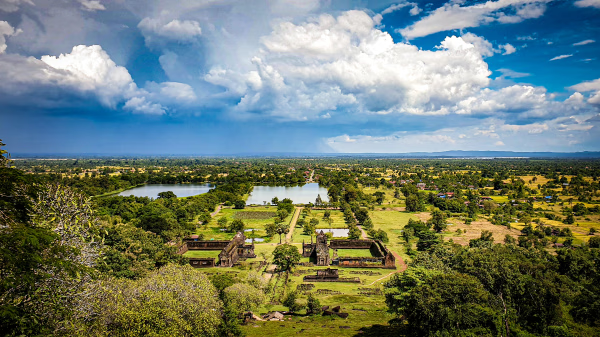
Laos in a landlocked nation on the Indochina Peninsula, bordered by Myan-mar and China in the north-west, Vietnam in the east, Cambodia int he south, and Thailand in the west. Officially known as the Lao People's Democratic Republic, it is one of the few places in our rapidly changing world that can boast of such a pristine natural and cultural environment. It is often described by visitors as a country untouched by time.
Vat Phou and Associated Ancient Settlements within the Champasak Cultural Landscape, which is a World Heritage Site in Lao PDR, includes the Nang Sida Temple. This 12th century temple is situated at the starting point of an ancient Khmer road that stretched all the way to Angkor in today's Cambodia. Presumably associated with pilgrimage activities, the Nang Sida Temple once served as a symbol of the imperial glory of the Khmer Empire, but has suffered an extended process of decay and reduced to rubble.
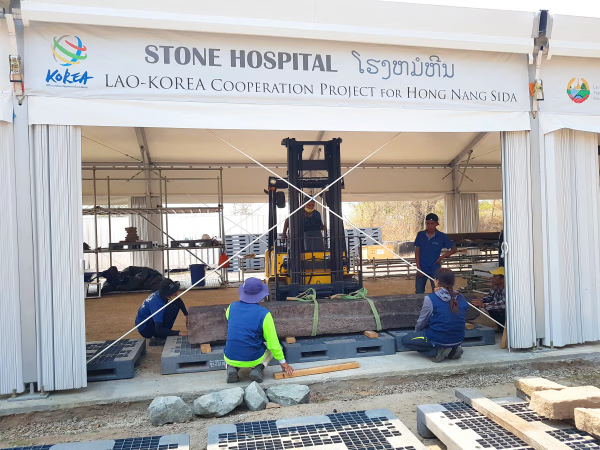
The temple restoration project, which is being carried out by the Cultural Heritage Administration and the Korea Cultural Heritage Foundation, is a form of Official Development Assistance (ODA) provided to Laos. Following the groundbreaking ceremony in October 2013, three years were dedicated to preliminary research and two more to establishing an environment conducive to the conservation work. After these preparatory endeavors, the temple has finally entered the process of restoration.
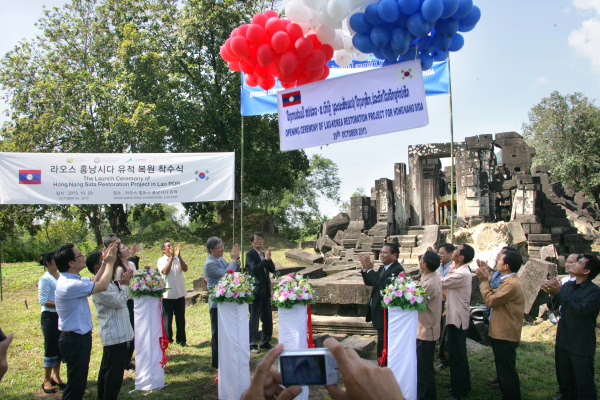
Bilateral Cooperation through Restoration of Cultural Heritage
The temple could not be accessed by car as there were no passable roads, and its cellar was completely buried under rubble. With little available historical information on the temple, the research team carried out archaeological and documentary research to lay a foundation for restoration. They created a space for the conservation treatment of stones, and repair work was conducted on damaged bridges and muddy pathways to provide better access to the temple. The newly established access roads are a particular boon not only for the field workers, but also for local residents and tourists.
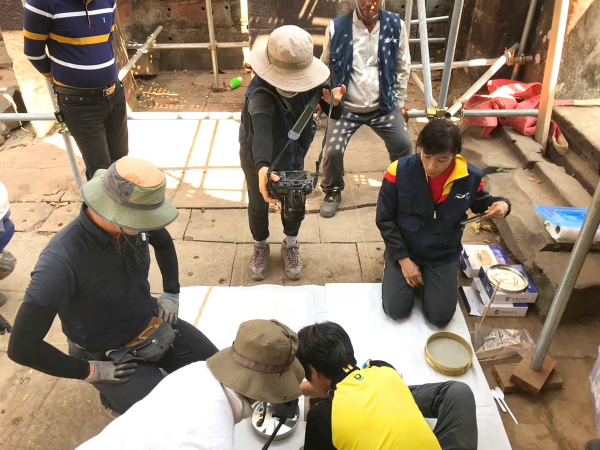
The original architectural members long buried underground have been unearthed to the greatest possible extent. Over the two years from 2017 to 2018, 675 stone members were collected, including major structural elements such as columns and capitals. Sculpted images of Hindu deities such as Ganesha, Garuda, and Naga were also uncovered. These finds will be utilized for the ultimate purpose of enhancing authenticity and avoiding conjecture in the restoration work.
The Hong Nang Sida temple restoration project is being conducted in coordination with other assistance programs aimed at capacity-building in the heritage field to promote sustainable development. Joint research has been conducted with the Lao Ministry of Information, Culture and Tourism and the World Heritage Site Office for Vat Phou, and conservation equipment has been provided along with technical training sessions in the field. In addition, heritage professionals from Laos at the working and managerial levels have been invited to South Korea to receive master’s level education and study heritage policy and management through a range of training programs.
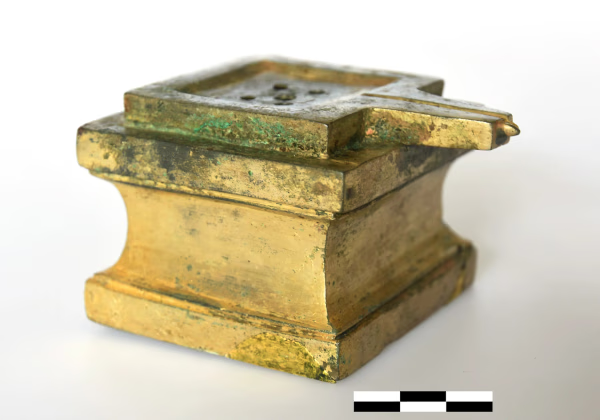
[Princess Sida's Temple to Shine Once Again]
The main thrust of the restoration project—disassembling and then reassembling the collapsed temple—has begun. A series of valuable artifacts have already been found during the process of dismantling the Hong Nang Sida temple. Most notably, a gilt-bronze yoni, or representation of the female reproductive organ, and votive objects buried to drive away evil spirits were discovered in February 2019, attracting passionate attention from the public in Laos. The gilt-bronze yoni, the first of its kind ever discovered in Laos, has been widely publicized in South Korea as well, providing an opportunity to raise awareness about the culture and history of the Khmer Empire.
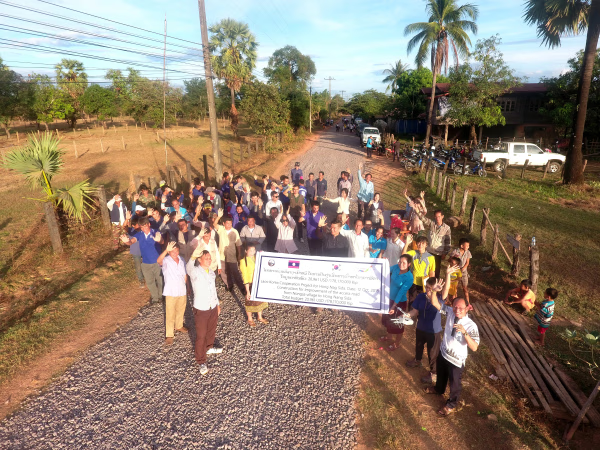
The Cultural Heritage Administration and the Korea Cultural Heritage Foundation are working toward restoring the original form of the Hong Nang Sida temple. Underlying this goal, however, is the principle of evidence-based conservation. The Korean research team will restore the Hong Nang Sida temple only to the extent that can be supported by historical evidence and cease their efforts when conjecture becomes unavoidable. After having remained obscure in darkness under rubble, the Hong Nang Sida temple seems to be gradually revealing hints of its original appearance. It is hoped that more evidence from the temple’s past will be unveiled in the future to support a full and authentic restoration.
ການນິດສະການທີ່ກ່ຽວຂ້ອງ
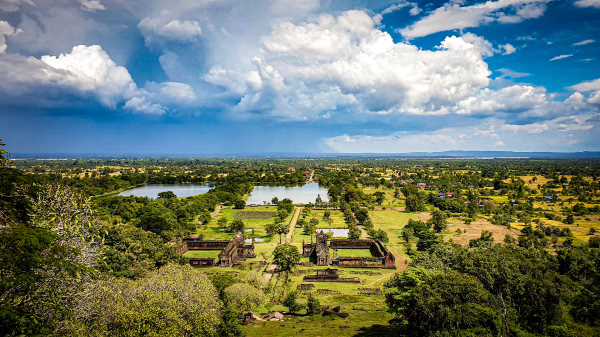
Natural History
Online Exhibition of the Vat Phou Champasak Ruins and the Excavation of Hong Nang Sida
The Vat Phou - Champasak site lies on fertile alluvial plains on the banks of the Mekong River, and its mountainous core is the eastern outlier of the Dângrêk Range, which is home to the Phou Kao Mountains that rise up to an altitude of 1,416 meters.
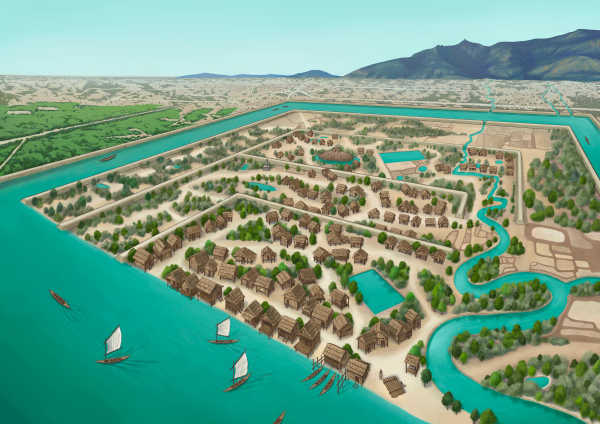
Natural History
Sacred River
The archaeological site of the ancient city is situated on the plains adjacent to the Mekong River. The city was surrounded by two layers of brick and earthen ramparts, with a moat in between. These ramparts measured approximately 2.4 km from north to south and 1.8 km from east to west, with the best-preserved sections standing up to 6 meters high and 14 meters thick. The walls and moats were likely constructed to manage and utilize the waters from the Phou Kao Mountains' tributaries.
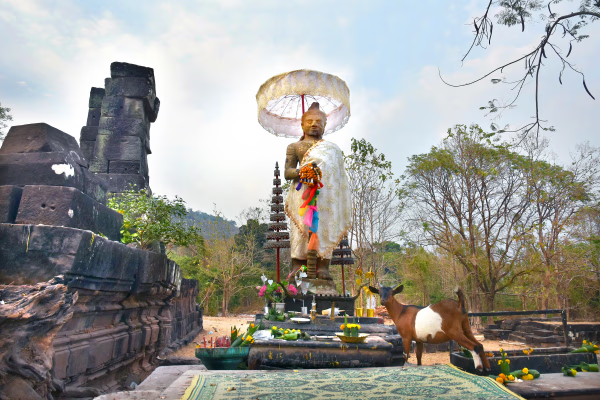
Natural History
Vat Phou-Champasak Site Exploration Itinerary
The pilgrimage journey from the World of Humans to the World of Saints, the World of Gods, and the World of Emptiness